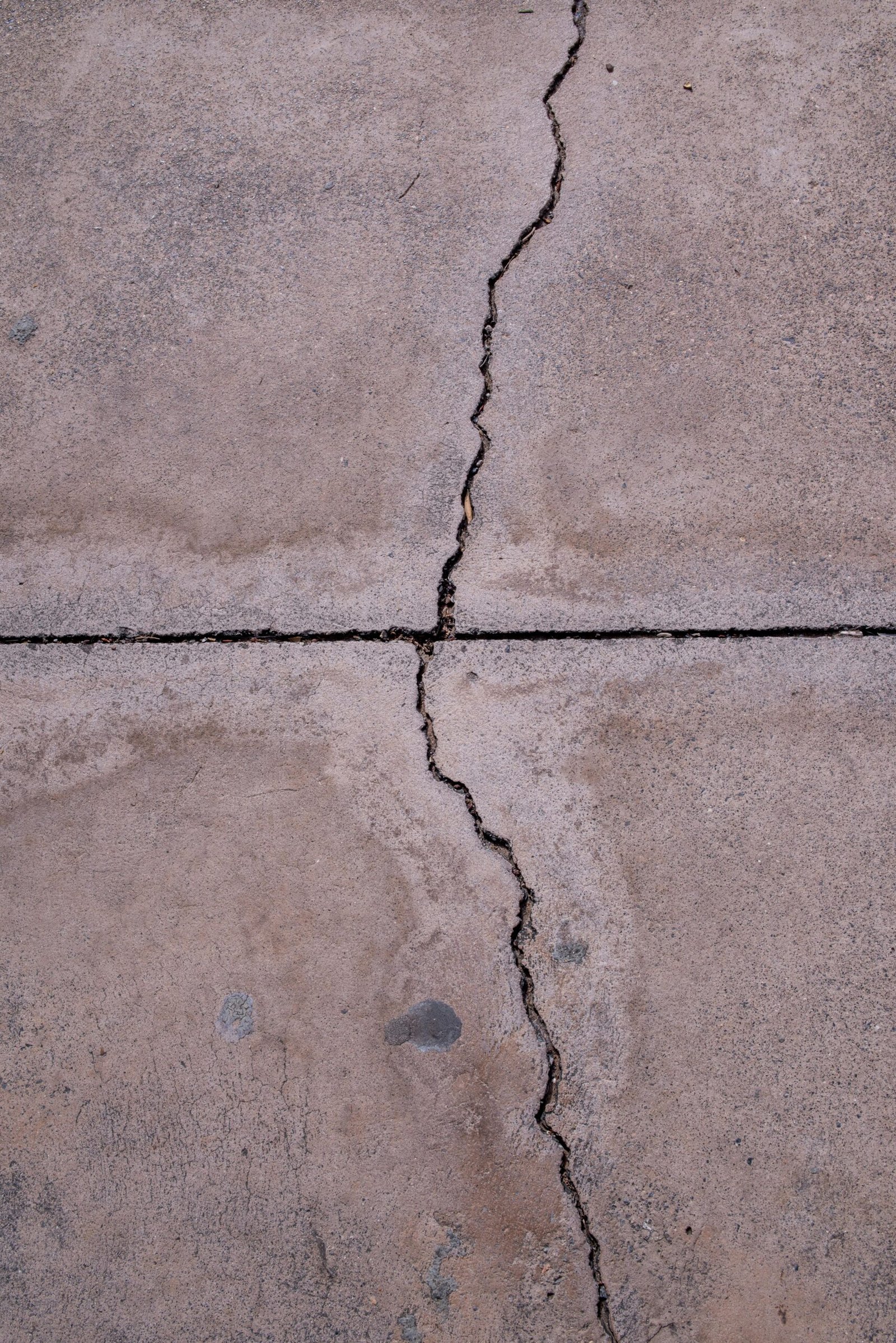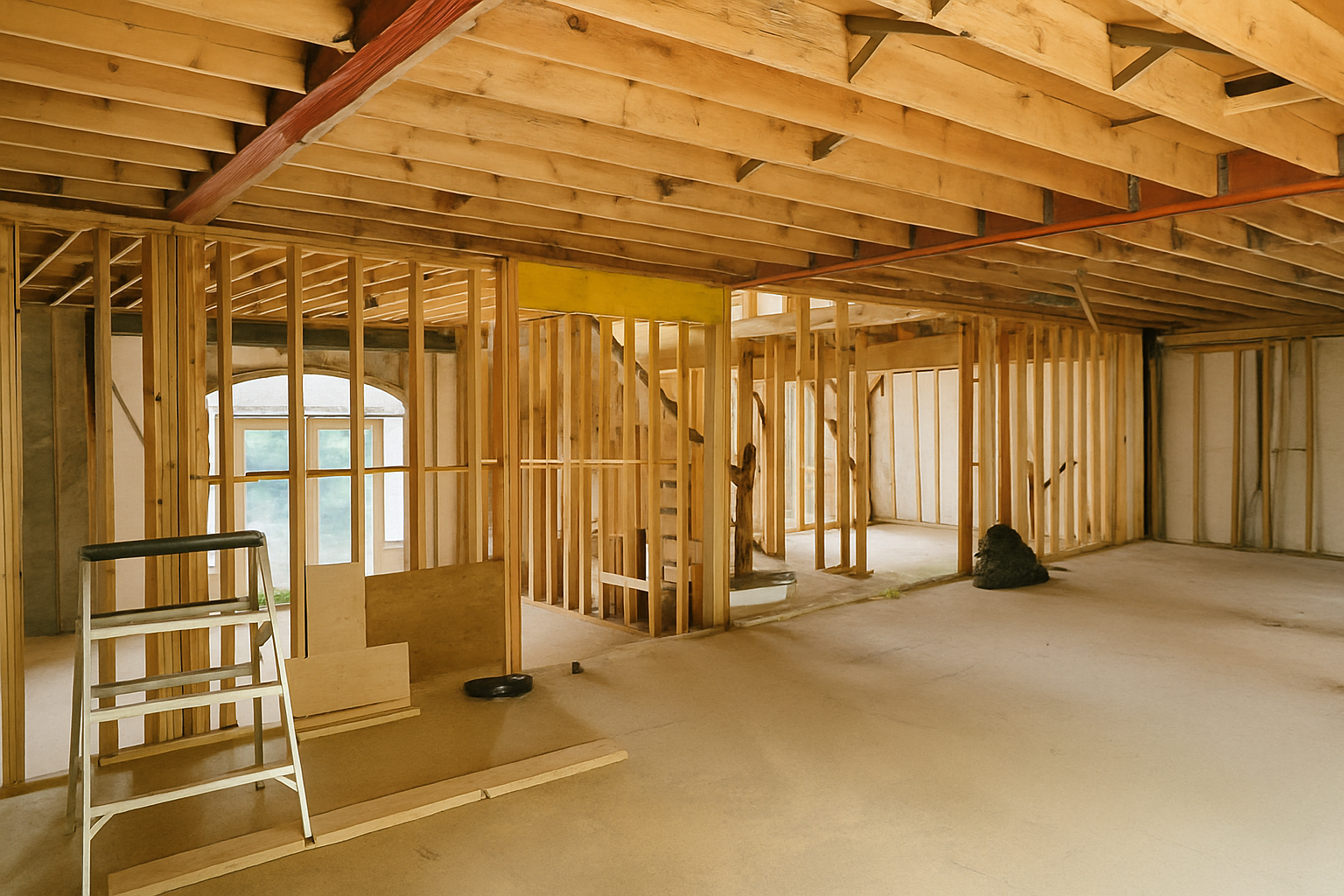Concrete garage slabs often develop cracks over time due to shrinkage, environmental conditions, and load stress. While most cracks are non-structural, understanding their causes and severity levels is essential for determining when intervention is required. We outline the principal mechanisms behind slab cracking, categorize crack types by severity, and outline repair thresholds, emphasizing that garage slabs are not part of the structural load-bearing system of residential buildings.
Cracks in residential garage slabs are a common occurrence observed across Canada’s housing stock. Although often perceived as structural failures, these cracks generally represent material or workmanship deficiencies rather than systemic risks. This blog is meant to clarify the causes and classifications of garage slab cracks and to identify when such issues warrant repair or replacement.
Causes of Garage Slab Cracks
A. Usage and Load Stress
Garage slabs are subject to significant live loads, including vehicle traffic, tire pressure points, and dynamic impact from daily use. Over time, these repeated stresses induce tensile strains in the concrete surface, which can lead to localized cracking, particularly near wheel paths and door thresholds.
B. Lack of Control (Saw) Cuts
Control joints, or saw cuts, are critical in allowing controlled shrinkage during the curing process. When omitted or improperly placed, the slab relieves internal stresses along random planes, leading to uncontrolled crack patterns. This is one of the most frequent causes of premature cracking in residential garages.
C. Poor Workmanship and Subgrade Preparation
Improper base compaction, inadequate reinforcement, or finishing the concrete before bleeding water has evaporated can all contribute to subsurface voids or weakened zones. When these conditions coincide with freeze-thaw cycles, differential movement occurs, resulting in visible cracking and slab displacement.
Classification of Crack Severity
A. Hairline Cracks
Hairline cracks (< 1 mm wide) are superficial and form naturally as part of the curing process. These are considered cosmetic and typically do not compromise slab performance. Monitoring is recommended, but repair is generally unnecessary.
B. Void Cracks
Void cracks are wider fissures that may allow debris or moisture intrusion. While not structurally critical, these can indicate uneven subgrade support or reinforcement spacing issues. Crack sealing or topical resurfacing may be used to prevent water infiltration and further propagation.
C. Out-of-Plane Cracks
Out-of-plane cracks occur when one side of the slab shifts vertically relative to the other. This condition suggests base settlement, frost heave, or subgrade failure. Professional evaluation is recommended, as these cracks may necessitate partial or full slab replacement.
Repair and Replacement Criteria
The decision to repair or replace a garage slab depends on functional and environmental factors rather than aesthetics alone. Cracks should be prioritized for repair if they:
- Present tripping hazards or uneven surfaces,
- Permit moisture intrusion leading to freeze-thaw deterioration,
- Exhibit ongoing movement or widening, or
- Interfere with garage door operation or drainage gradients.
Epoxy or polyurethane injection can effectively seal minor cracks. However, where differential settlement exceeds tolerance limits (typically >6 mm), slab replacement may be the most economical long-term solution.
Structural Context of Garage Slabs
Unlike foundation walls or grade beams, garage slabs-on-grade are non-structural elements. They are isolated from the primary load-bearing system and do not transfer roof or wall loads. Consequently, cracking within the slab typically affects serviceability rather than the structural stability of the residence.
Conclusion
Garage slab cracks are a natural outcome of material behavior and service conditions. By identifying the root cause and assessing crack severity, homeowners can distinguish between benign cosmetic defects and signs of subgrade distress. Regular inspection, preventive sealing, and professional review where necessary ensure the long-term performance and safety of the garage environment.
References
[1] ACI Committee 302, Guide for Concrete Floor and Slab Construction, American Concrete Institute, 2015.
[2] Canadian Standards Association, CSA A23.1/A23.2: Concrete Materials and Methods of Concrete Construction, Mississauga, ON, 2019.
[3] Portland Cement Association, Concrete Floors and Slabs Construction (EB075), PCA, Skokie, IL, 2016.
[4] T. Allen, “Durability Considerations for Residential Concrete,” Canadian Journal of Civil Engineering, vol. 45, no. 7, pp. 556–563, 2020.



